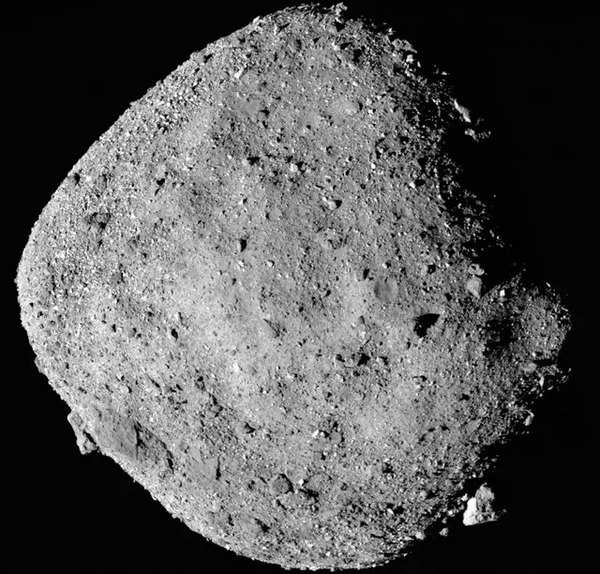[ad_1]
Scientists are excited about what they will find from studying the samples, as it may give us a better understanding about the formation of our solar system and how Earth became a habitable planet.
The Osiris-Rex probe’s final, fiery descent through Earth’s atmosphere was closely watched across the world due to the perils involved during its re-entry.
The capsule made a successful soft landing at a military test range in northwestern Utah.
The probe was launched back in 2016 and landed on the asteroid “Bennu” in 2020.
It managed to collect roughly nine ounces (250 grams) of dust from the asteroid’s rocky surface. Scientists anticipated getting at least a cup of rubble from the carbon-rich asteroid.
About a teaspoon was returned by Japan, the only other country to bring back asteroid samples.
Nasa said that even such a small amount of asteroid dust should “help us better understand the types of asteroids that could threaten Earth” and cast light “on the earliest history of our solar system.”
“This sample return is really historic. This is going to be the biggest sample we’ve brought back since the Apollo moon rocks were returned to Earth,” Nasa scientist Amy Simon had told AFP earlier.

File: Nasahandout of a mosaic image of asteroid Bennu composed of 12 PolyCam images
A fiery passage
Osiris-Rex released the capsule early Sunday — from an altitude of more than 67,000 miles (108,000 kilometers) — some four hours before it lands.
By the time it returned on Sunday, the spacecraft had travelled 4 billion miles (6.2 billion kilometers).
The fiery passage through the atmosphere came only in the last 13 minutes, as the capsule hurtled downward at a speed of more than 27,000 miles per hour, with temperatures of up to 5,000 Fahrenheit (2,760 Celsius).
Its rapid descent was monitored by army sensors.
Parachutes were successfully deployed towards the very end of the journey, slowing the capsule to about 11 mph before it fell gently onto the desert floor.
On arrival, the sample will be flown by helicopter to a “clean room” at the Utah test range for initial examination, then transported to Nasa’s Johnson Space Center in Houston, to be parceled into smaller specimens promised to some 200 scientists in 60 laboratories around the world.
After studying the samples, Nasa is planning to announce its first results at a news conference on October 11.
Valuable insights
Asteroids are comprised of the original materials that have been part of our solar system for approximately 4.5 billion years, and they have managed to remain relatively unchanged throughout this vast span of time.
According to Melissa Morris, the program executive of Osiris-Rex, asteroids have the potential to provide valuable insights into the formation and evolution of our solar system. In her words, they represent our own cosmic origin story.
Furthermore, these celestial bodies have played a pivotal role in shaping our planet’s history.
It is believed that asteroids and comets impacting Earth in the distant past delivered organic materials, including potentially life-enabling substances like water, which contributed to the development and flourishing of life on our planet.
Bennu is one such asteroid which has been of great interest to scientists.
With a diameter of approximately 500 meters (1,640 feet), scientists feel that Bennu, being rich in carbon, may contain water molecules locked within its minerals.
Bennu’s peculiarities were brought to light in 2020 when the probe made contact with its surface, revealing an unexpectedly low density, akin to a children’s pool filled with plastic balls.
Understanding the composition of asteroids like Bennu could prove vital in the distant future.
(With inputs from agencies)
[ad_2]
Source link










More Stories
We can’t wait to face India in the final: Pat Cummins | Cricket News
Railways plans 3,000 additional trains in next 4-5 years to minimise number of waitlisted tickets | India News
Faridabad: Man dies after ‘falling from hotel room window’ while partying with friends